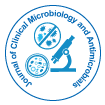

Commentry - (2023)Volume 7, Issue 4
Children, in their formative years, navigate a crucial phase of development marked by rapid physical, emotional, and immunological changes. Amidst the wonders of growth, the pediatric population finds itself particularly susceptible to microbial infections. This susceptibility stems from a combination of factors, ranging from an immature immune system to environmental exposures.
Immature immune defense
The immune system serves as the body's primary defense against invading pathogens. In pediatric patients, however, this defense is a work in progress. The immune system undergoes a series of developmental stages, and during early childhood, it may not be as robust as that of adults. The production of antibodies, which are essential for recognizing and neutralizing pathogens, takes time to reach optimal levels. This developmental lag renders children more susceptible to a variety of microbial invaders.
Incomplete immunization
While vaccination plays a pivotal role in fortifying the immune system, the pediatric population is often in the process of completing their vaccine schedules. The intervals between vaccine doses leave windows of vulnerability, during which children may lack full protection against specific infections.
Moreover, infants who have yet to start their vaccination journey are particularly defenseless, relying solely on maternal antibodies transferred during pregnancy and breastfeeding.
Exploring environmental exposures
Children are naturally curious explorers, and their environment becomes a playground for discovery. However, this exposure to various settings, especially in daycare or school environments, increases the likelihood of encountering pathogens. The close proximity of children in these settings facilitates the easy transmission of microbes. Common colds, flu, and other contagious infections find an opportune breeding ground in such social environments, contributing to the susceptibility of pediatric populations.
Hand-to-mouth habit
Children are notorious for their hand-to-mouth habits, a behavior ingrained in their early developmental stages. While this curiosity aids in sensory exploration, it also serves as a conduit for the transmission of microbes. Contaminated hands, toys, or surfaces easily find their way into a child's mouth, creating an avenue for microbial entry. This habitual behavior amplifies the risk of gastrointestinal and respiratory infections, two prevalent categories of microbial threats in pediatrics.
Underdeveloped physical barriers
Beyond the immune system, the physical barriers that protect the body are also in the process of maturation in children. The skin, respiratory tract, and gastrointestinal lining are not as welldeveloped as in adults, making it easier for microbes to breach these defenses. Respiratory infections, such as pneumonia, and skin infections become more common due to these underdeveloped physical barriers.
High metabolic rate
Children possess a higher metabolic rate than adults, a characteristic that influences their energy utilization and nutrient requirements. This elevated metabolic rate, while crucial for growth, also demands a substantial energy supply. In cases of microbial infections, the body redirects energy resources towards fighting the infection, potentially compromising the overall energy balance. This phenomenon can lead to fatigue, malaise, and delayed recovery in pediatric patients.
Maternal antibodies
During the early stages of life, infants benefit from the transfer of maternal antibodies through the placenta and breast milk. While this provides a temporary shield against certain infections, these maternal antibodies gradually wane, leaving a gap in immunity. The decline of maternal antibodies coincides with the period when infants are exposed to a wider array of environmental microbes, rendering them susceptible to infections until their own immune systems mature.
Implications and strategies for protection
Understanding the susceptibility of pediatrics to microbial infections is crucial for developing effective strategies to safeguard their health. Immunization schedules should be diligently followed, with healthcare providers ensuring timely administration of vaccines. Hygiene practices, both at home and in communal settings, play a pivotal role in reducing the risk of infections. Regular handwashing, proper sanitation, and the creation of clean environments are essential preventive measures.
Additionally, promoting a healthy lifestyle that includes balanced nutrition, adequate sleep, and physical activity can contribute to the overall well-being of pediatric populations. Educating parents, caregivers, and educators about the unique vulnerabilities of children and the importance of preventive measures is paramount in building a protective shield against microbial threats.
Citation: Nocini R (2023) Susceptibility of Pediatrics to Microbial Infections. J Clin Microbiol Antimicrob. 7:178.
Received: 24-Nov-2023, Manuscript No. JCMA-23-28709; Editor assigned: 27-Nov-2023, Pre QC No. JCMA-23-28709 (PQ); Reviewed: 12-Dec-2023, QC No. JCMA-23-28709; Revised: 19-Dec-2023, Manuscript No. JCMA-23-28709 (R); Published: 26-Dec-2023 , DOI: 10.35248/jcma.23.7.178
Copyright: © 2023 Nocini R. This is an open-access article distributed under the terms of the Creative Commons Attribution License, which permits unrestricted use, distribution, and reproduction in any medium, provided the original author and source are credited.